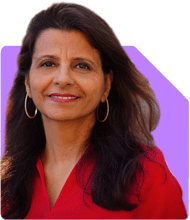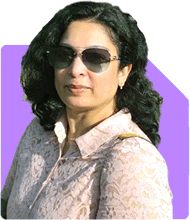Komal Jethmalani |409 Answers |Ask -Follow
Dietician, Diabetes Expert - Answered on Jan 13, 2024
She specialises in weight loss and diabetes management.
Jethmalani has completed her MSc in food and nutrition from SNDT University and trained at Jaslok Hospital.
She is a NDEP-certified diabetes educator.... more

My Fasting & PP readings.after taking a glass of Paneer Ka Dodha,in the morning, are now within normal range.How long can this ayurvedic up-char be taken continuously and will it eliminate type 2 diabetics completely?
You may like to see similar questions and answers below
Komal Jethmalani |409 Answers |Ask -Follow
Dietician, Diabetes Expert - Answered on Oct 19, 2020
Roopashree Sharma | Answer |Ask -Follow
Yoga, Naturopathy Expert - Answered on Aug 29, 2022
Dr Ashit Hegde | Answer |Ask -Follow
Consultant Physician, Internal Medicine and Critical Care Expert - Answered on Jul 13, 2023
Komal Jethmalani |409 Answers |Ask -Follow
Dietician, Diabetes Expert - Answered on Sep 18, 2024
Dr Nagarajan J S K |2083 Answers |Ask -Follow
NEET, Medical, Pharmacy Careers - Answered on Jul 29, 2025
Dr Nagarajan J S K |2083 Answers |Ask -Follow
NEET, Medical, Pharmacy Careers - Answered on Jul 29, 2025
Dr Nagarajan J S K |2083 Answers |Ask -Follow
NEET, Medical, Pharmacy Careers - Answered on Jul 29, 2025
Dr Nagarajan J S K |2083 Answers |Ask -Follow
NEET, Medical, Pharmacy Careers - Answered on Jul 29, 2025
Dr Nagarajan J S K |2083 Answers |Ask -Follow
NEET, Medical, Pharmacy Careers - Answered on Jul 29, 2025
Dr Nagarajan J S K |2083 Answers |Ask -Follow
NEET, Medical, Pharmacy Careers - Answered on Jul 29, 2025
Dr Nagarajan J S K |2083 Answers |Ask -Follow
NEET, Medical, Pharmacy Careers - Answered on Jul 29, 2025
Nayagam P P |9650 Answers |Ask -Follow
Career Counsellor - Answered on Jul 29, 2025
Nayagam P P |9650 Answers |Ask -Follow
Career Counsellor - Answered on Jul 29, 2025
Nayagam P P |9650 Answers |Ask -Follow
Career Counsellor - Answered on Jul 29, 2025























